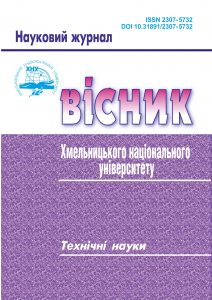MODELING QPSK SIGNALS IN SIMULINK ENVIRONMENT
DOI:
https://doi.org/10.31891/2307-5732-2023-327-5-167-172Keywords:
modulation, quadrature amplitude modulation, hierarchical quadrature amplitude modulationAbstract
This article provides an overview of signal manipulation techniques such as hierarchical quadrature pulse width modulation, circular quadrature pulse width modulation, and parametric quadrature pulse width modulation. Communication systems can efficiently transmit information in analog and digital form and, depending on the requirements for signal characteristics, can perform the appropriate type of modulation or manipulation required in a particular case. The above-mentioned types of modulation and quadrature amplitude modulation are modeled using the MATLAB mathematical modeling environment.
Parametric quadrature amplitude modulation, as well as hierarchical modulation, is built on the basis of the QAM constellation. However, its feature is that the distance between any points is the same and is set equal to 1.15. This value is chosen so that the areas of the signal constellations of certain modulation levels are approximately equal. In the experiment, the location of the points on the signal constellation is not based on a square, as in QAM, but an equilateral triangle.
A model is presented for modulating and demodulating signals using various coding methods used in modern communication systems. Such types of signal modulation are binary phase-shift keying (BPSK), quadrature phase-shift keying (QPSK), and quadrature amplitude modulation (MQAM). Based on these modulation schemes, advanced signal transmission schemes have been developed, such as HQAM (hierarchical QAM), CQAM (circular QAM), and θQAM (parametric quadrature amplitude modulation).
To compare the modulation types, two modulation orders are used - 16 and 64; to evaluate the effectiveness of using a particular type of modulation, a communication channel is modeled, as well as to estimate the level of BER dependence on SNR for CQAM, PQAM, HQAM, and QAM.

